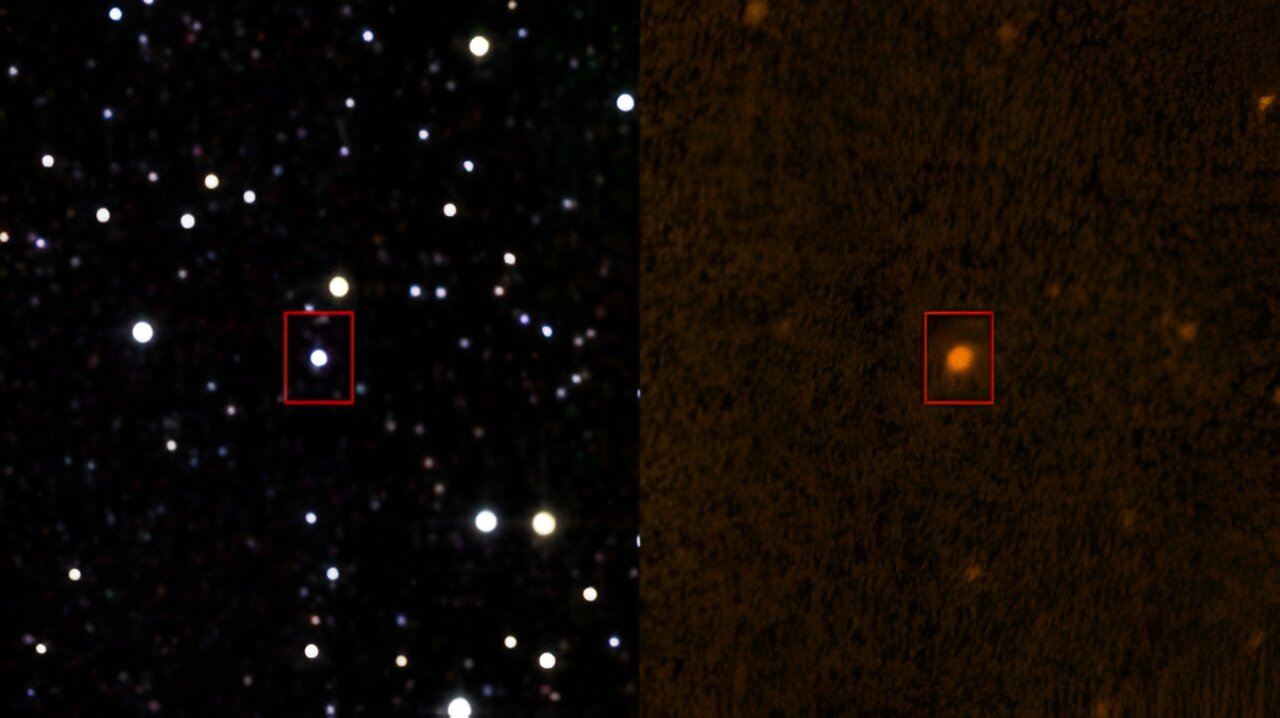Are Scientists Close to Discovering Alien Megastructures in the Milky Way?
In a recent study published in the Monthly Notices of the Royal Astronomical Society, astronomers have identified seven candidate stars within 1,000 light-years from Earth that exhibit excess infrared emissions. These stars, all red dwarfs, have been scrutinized for any signs of alien megastructures that could be responsible for the anomalous signals. While there are plausible explanations for the infrared signatures, scientists are optimistic that further investigation with advanced instruments like the JWST could unveil the presence of extraterrestrial technology.
The concept of alien megastructures, such as Dyson Spheres and Dyson Rings, has intrigued scientists for decades. These hypothetical structures, proposed by physicist Freeman Dyson, are designed to harness the energy of a star by enveloping it in vast artificial constructs. By capturing a significant portion of a star’s energy output, advanced alien civilizations could sustain their technological advancements and energy needs on a massive scale. While the existence of such megastructures remains speculative, the identification of potential candidates among nearby stars has reignited the search for extraterrestrial intelligence.
As astronomers continue to analyze the infrared excess emissions and other biosignatures of the candidate stars, the possibility of detecting alien technology becomes increasingly tantalizing. By leveraging cutting-edge technology and scientific methodologies, researchers are committed to unraveling the mysteries of the cosmos and uncovering the presence of intelligent life beyond our solar system. The quest for alien megastructures in the Milky Way represents a groundbreaking endeavor that could revolutionize our understanding of the universe and humanity’s place within it.
Exploring the Potential Existence of Alien Dyson Spheres and Swarms
The notion of alien megastructures, particularly Dyson Spheres and Dyson Swarms, has captured the imagination of astronomers and science fiction enthusiasts alike. These colossal constructs, envisioned as advanced energy-gathering mechanisms built by extraterrestrial civilizations, have long been considered as potential indicators of intelligent life in the universe. While the concept of Dyson Spheres remains theoretical, recent advancements in observational astronomy have brought scientists closer to identifying potential candidates for these enigmatic structures.
By analyzing the infrared excess emissions of stars within the Milky Way galaxy, astronomers have pinpointed several red dwarf stars that exhibit anomalous signals suggestive of artificial megastructures. These stars, located within a thousand light-years from Earth, present a compelling opportunity to investigate the presence of alien technology on a cosmic scale. The deployment of state-of-the-art instruments like the JWST offers a promising avenue for probing the suspected megastructures and shedding light on the existence of advanced extraterrestrial civilizations.
As researchers delve deeper into the search for Dyson Spheres and Swarms among the candidate stars, the scientific community remains vigilant in its pursuit of cosmic discoveries. The quest to unveil the secrets of alien megastructures represents a monumental endeavor that could reshape our understanding of the universe and redefine the boundaries of human knowledge. Through relentless exploration and scientific inquiry, astronomers stand poised to unlock the mysteries of the cosmos and potentially encounter evidence of intelligent life beyond our solar system.
Unveiling the Enigma of Alien Megastructures in the Quest for Extraterrestrial Intelligence
The hunt for alien megastructures in the Milky Way galaxy has intensified as astronomers focus their attention on identifying potential candidates for these enigmatic constructs. With the discovery of seven red dwarf stars exhibiting excess infrared emissions, scientists have embarked on a journey to unravel the mysteries of alien technology and the existence of advanced extraterrestrial civilizations. By scrutinizing the unique signatures of these candidate stars and exploring alternative explanations, researchers are paving the way for groundbreaking discoveries in the realm of astrobiology and astrophysics.
Theoretical constructs like Dyson Spheres and Dyson Swarms offer a glimpse into the technological prowess of hypothetical alien civilizations capable of harnessing the energy of stars on a colossal scale. While the search for alien megastructures remains speculative, the identification of promising candidates within our cosmic neighborhood fuels optimism for the detection of intelligent life beyond Earth. Through systematic observation and analysis, astronomers aim to uncover the truth behind the anomalous signals emanating from the candidate stars and shed light on the potential presence of alien megastructures in the Milky Way.
As the scientific community delves deeper into the quest for extraterrestrial intelligence and alien megastructures, the pursuit of cosmic revelations takes on new significance and urgency. By leveraging cutting-edge technology and innovative research methodologies, astronomers strive to push the boundaries of human knowledge and explore the vast unknown realms of the universe. The enigma of alien megastructures stands as a testament to humanity’s insatiable curiosity and unyielding quest for understanding the complexities of the cosmos.

